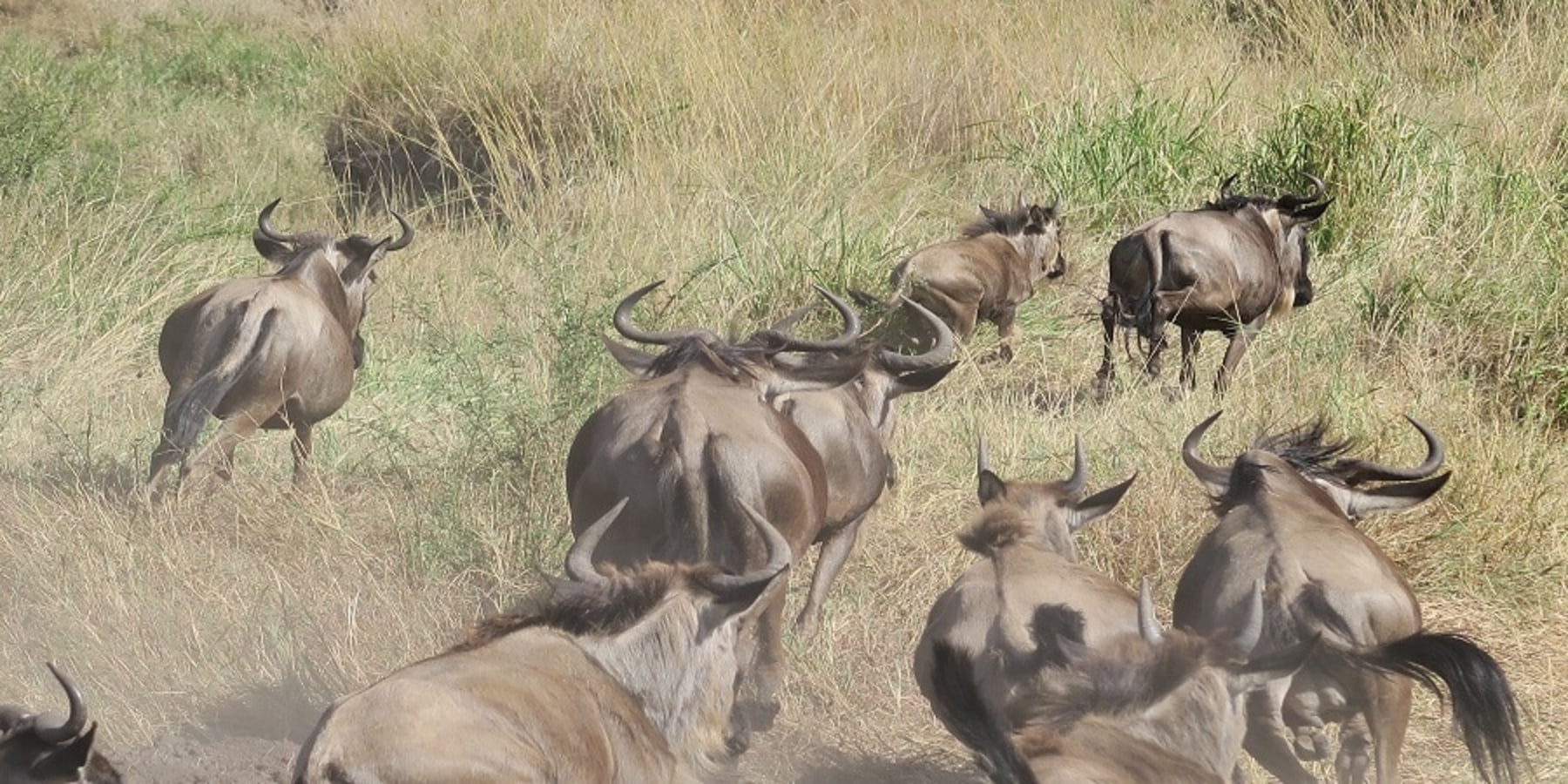
The famous Serengeti wildebeest migration is an ever ending movement of more than 1.5 wildebeest joined by zebras, and small groups of Grant's gazelle, Thomson's gazelle, impala and eland making their way across the vast plains of Serengeti to Maasai Mara in Kenya and back again. The movement is mainly instigated by the urge to seek fresh grazing land and water; each wildebeest may cover up to 800 km of trekking.
Each year bring about a different rain pattern that affects the movement. The journey is filled with danger as the vicious predators snatch the young and vulnerable calves alongside the weaker ones, without forgetting the enormous obstacles of the river crossing, which leave some with broken feet and only make room for the strongest to survive this difficult journey.
January – February – March
Around January, most migratory animals will be done with their southward trekking and will start heading to the eastern edge of Serengeti and slightly occupying the Ngorongoro Conservation Area (Ndutu). the animals favour this place more because of the fresh and nutritious grass, making it the best place to raise their calves. The short grasses also make it hard for predators to hide, allowing them to be on alert whenever they spot one. The calving season usually happens around February within a short period of two to three weeks. Almost 8,000 calves are born each day and learn to stand on their feet and walk within few minutes after birth. They become part of the herd shortly as they walk alongside their mother. The mothers take up to nine months of weaning their young. The circular movement has no specific beginning, but the calving season may be counted as the start. This season is best for those who want to watch real action as the big cats take their chances on the vulnerable calves while the mothers protect them. In March, the animals gradually move to the west side of the plain.
April – May
By April and May, the wildebeest start their trekking to the north in search of better pastures and water. The movement becomes hectic around the Moru kopjes and west of Seronera as large herds containing hundreds of thousands of animals congregate here. Mating season takes place at the end of May; males do not sleep or eat while sexually active females are near, and they battle head to head with other males for the females. All this happens while their journey proceeds gradually, with gazelle and zebra going along with them.
June – July
in June majority of the migration halt on the southern banks of the Grumeti River. After gathering in high density, they attempt to take over their first obstacle; the Grumeti river. The river is mainly characterized by a series of streams and pools that are not permanent, so although it is crocodile-infested, it still can't be compared with the more challenging mara river. The river crossings are probably one of the few thrilling wildlife events on earth. As July approaches, the animals keep proceeding towards the north. Some animals head to Grumeti reserve and Ikorongo while the majority keeps running north with the most challenging obstacle ahead of them; the Mara river.
August – September
In August and September, most animals make their way towards the Mara River. The river provides them with the most strenuous obstacle, with crocodiles trying to take them down while predators linger along the river banks, waiting to feast on the weaker ones. Here, thousands of wildebeest lose their lives due to intensive injury; only the strongest survive this major hurdle. The herds proceed towards Maasai Mara in Kenya, with some of them making a back and forth movement in the Mara river for no apparent reason. The large population will have to face the river once more for their return journey.
October -November – December
after the short rains in late October and November, the wildebeest make their way back to Serengeti plains from Maasai Mara through western Loliondo and Serengeti National Park's Lobo area. The movement is of more accord as they make their way back to the Ndutu area in late November where the circle starts all over again.
How many days do you need in the Serengeti for wildebeest migration?
The number of days you should spend in the Serengeti will entirely depend on many different factors. One of the main factors will be your budget and how many activities you would like to engage in during your safari.
Nevertheless, considering that most travellers would have an average budget, the ideal number of days to spend in the Serengeti is 4 days, 3 nights. This will give you a full two days of game drives, and this would be sufficient to see most of the important attractions at the Serengeti.
It is important to crosscheck the time of the year that you want to visit. Sometimes abrupt weather changes may lead to the delay of migration or changing of schedule. It is crucial to enquire before booking the migration safari.

